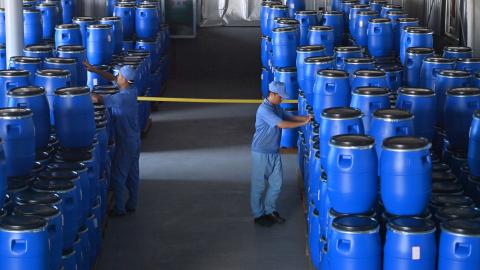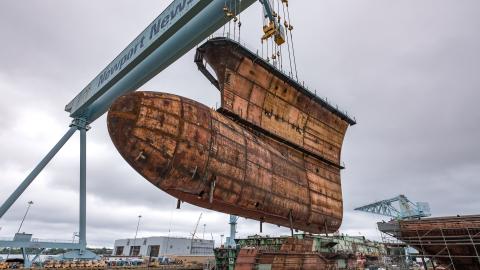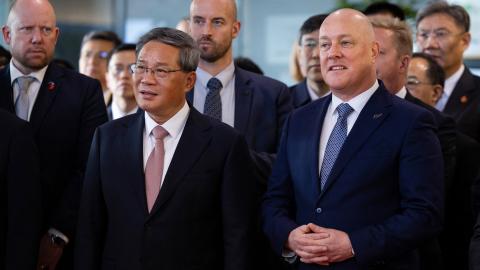Chinese Premier Li Qiang passed through New Zealand before landing in Adelaide. Many Australians see the New Zealand stop as a minor component of Li’s Australasia trip, the main purpose of which is to endorse Anthony Albanese’s approach of stabilising ties with China. To downplay the New Zealand component is to misunderstand Chinese strategy and intention in our region.
One of the things that really enraged Beijing during the Turnbull-Morrison period was not just that they introduced many policies against Chinese interests. It was very effective activism of the two previous Coalition governments that really fanned the fury. China obviously disliked Coalition policies such as banning Huawei from its 5G network, taking measures to combat foreign interference, and calling out Chinese aggression in Northeast and Southeast Asia.
But it was the success these two Coalition governments had in persuading others to do similarly that became intolerable to Beijing. Especially during the Morrison period, Australia assumed a critical role in the frontline of a regional and global pushback against China by many advanced economy liberal democracies, in groupings such as the Quad and by organisations such as the Group of Seven. It is why Chinese officials and state media constantly berated Australia as an upstart.
If overt tensions with China increased significantly with almost all liberal democracies over the past few years, New Zealand was a notable exception under John Key and Jacinda Ardern. Although Australia’s ally and a member of the Five Eyes intelligence network, Wellington took a small-target approach with China. In practice, this meant turning a blind eye to extensive Chinese infiltration and interference in New Zealand’s institutions, retaining a studied silence vis-a-vis Chinese aggression and transgressions around the world, and being the only Five Eyes nation to formally sign on to Xi Jinping’s Belt and Road Initiative.
This matters to China because a fundamental pillar of its strategy in the Indo-Pacific is to intimidate, nullify or else neutralise America’s allies and strategic partners. The fewer active allies and partners there are, the more isolated and less relevant America becomes, and the easier it is for China to overwhelm the rest of the region. In every element of power – militarily, economically, institutionally, diplomatically or normatively – there is no balance without America.
New Zealand is hardly a regional, let alone, global power. But Wellington is a potential complication for Beijing’s designs in the Pacific and Antarctica as it expands its presence in both these subregions. As Australia has shown, small countries can achieve outsized impacts through effective advocacy and example. For this reason, Beijing has long been delighted New Zealand did not follow Australia’s approach.
China is not yet alarmed but is wary. Under the coalition government led by Chris Luxon, Wellington is reassessing its previously nonconfrontational approach. Luxon and his forthright Foreign Minister, Winston Peters, have gone out of their way to openly express serious concern about aggressive Chinese activities in the South China Sea and malign intentions in the Pacific. Chinese foreign interference in New Zealand was raised by Luxon when he met with Li. Wellington is even expressing interest in joining Pillar Two of AUKUS, the part that doesn’t concern nuclear-powered submarines. AUKUS might be a stretch too far for New Zealand at this stage given the considerable increases in defence investment and immense changes to strategic policy that would entail. But it is further evidence that changes are afoot in New Zealand.
Beijing issued both inducements, in the form of investment promises and visa free travel into China for New Zealanders, and veiled threats. For example, offerings were accompanied by warnings from Beijing’s ambassador in Wellington that relations were at a “critical juncture” and progress will be destroyed if New Zealand takes sides against China.
There will still be many voices in New Zealand arguing for maintenance of the previous reasoning: let bigger powers take on the hard work of balancing against China, do what it takes to maintain friendly relations with Beijing, and focus on selling exports into the huge Chinese market. It’s the second part of that reasoning that is becoming less attractive for the Luxon government. Doing what it takes to maintain friendly relations means continuing to turn a blind eye to pernicious Chinese activities inside New Zealand and tolerating growing Chinese presence and challenging behaviour in areas New Zealanders care about – the Pacific and Antarctica.
In a sense, Li has contrasting objectives on this Australasia visit. In foreign affairs, he wants the Albanese government to be less like its predecessor and the Luxon government to be more like what came before it. The common thread is that Beijing wants both countries to be less of a complication, which means a less activist Australia and continued Kiwi timidity. For China, this is what enduring stability looks like.
















